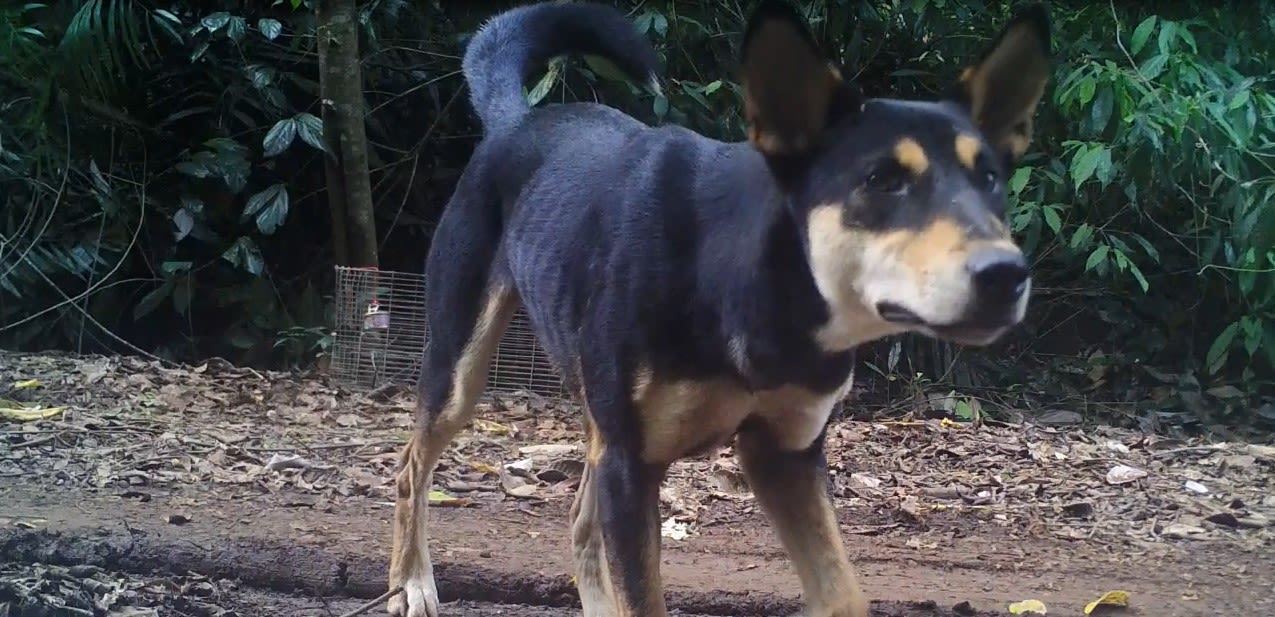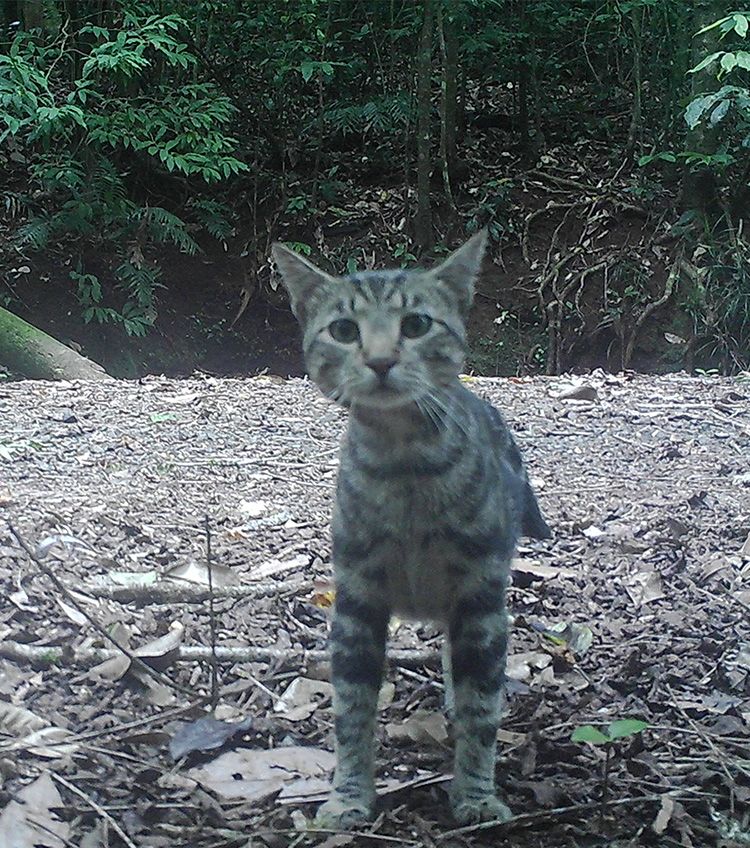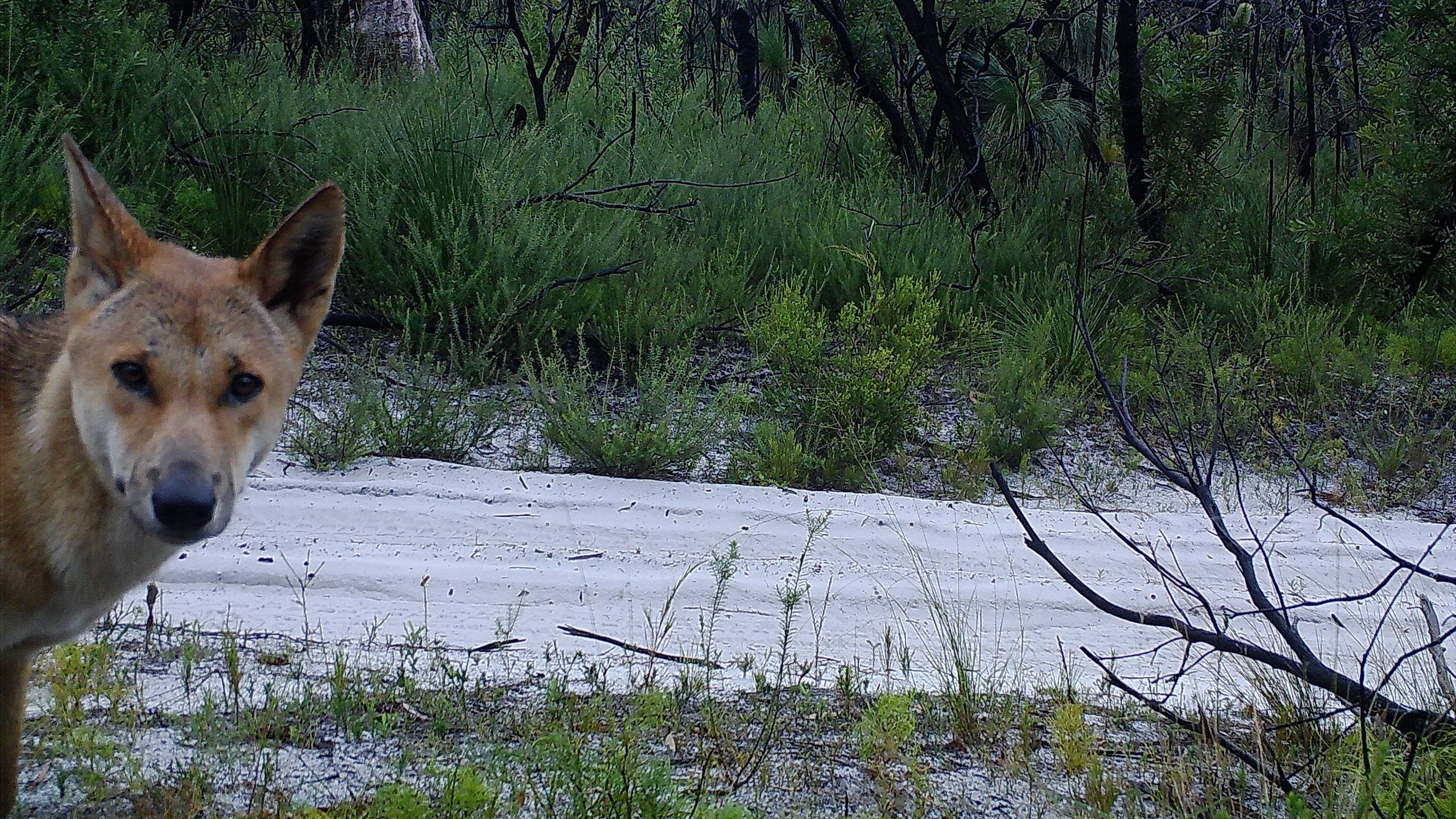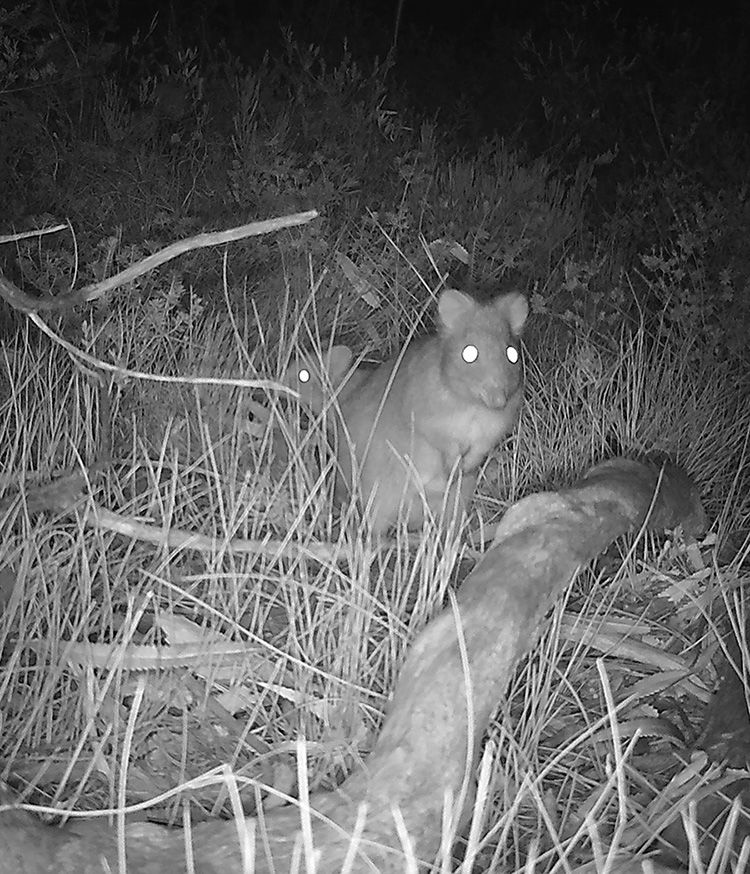'Big Brother' of the bush
Scientists spy on wildlife to save species

Cameras that spy on wildlife could provide the secrets scientists need to save vulnerable species.
University of Queensland researchers have embarked on a world-first innovation to study and protect Australian animals by opening-up access to millions of images from the bush.
About 10,000 hidden cameras are installed across Australia at any given time, capturing wildlife in their native environments, and observing species as they behave naturally.

A tree kangaroo from the Wet Tropics region. Image: UQ/QPWS
The cameras generate hundreds of millions of images annually, but there’s no central database where the images and corresponding data can be accessed.
Dr Matthew Luskin, from UQ’s School of Biological Sciences and the Ecological Cascades Lab, and his team want to change this, and they have partnered with the Terrestrial Ecosystem Research Network (TERN) to launch the first dedicated wildlife observatory in the world.

A tree kangaroo from the Wet Tropics region. Image: UQ/QPWS
A tree kangaroo from the Wet Tropics region. Image: UQ/QPWS

A feral cat captured using hidden cameras in the Wet Tropics. Image: UQ/QPWS
A feral cat captured using hidden cameras in the Wet Tropics. Image: UQ/QPWS

A pheasant coucal taken on K'gari. Image: UQ/QPWS
A pheasant coucal taken on K'gari. Image: UQ/QPWS
The Wildlife Observatory of Australia (WildObs) will allow scientists, governments, and environmental groups to access millions of images and the accompanying datasets, in a bid to create a more data-driven and streamlined approach to conservation.

A feral cat captured using hidden cameras in the Wet Tropics. Image: UQ/QPWS
“A single camera trapping study can produce millions of images,” Dr Luskin said.
“Researchers must go through every image and document the species, its behaviour and other observations, which is labour-intensive and can bottleneck research and decision-making.
“And after all that work, the images are often deleted to clear hard drive space, and data is stored offline and lost.”
Dr Luskin said WildObs would open endless possibilities for research, including improved population and animal behaviour monitoring.
“WildObs also provides the baseline information and rapid analysis tools to help us respond to natural disasters such as bushfires, floods and climate change.”

A pheasant coucal taken on K'gari. Image: UQ/QPWS
WildObs was made possible with Federal Government funding from ARC, and the project involves many government and NGO stakeholders, including TERN (based at UQ), which will oversee the database once the Wildlife Observatory is fully developed.
K'gari project


Zachary Amir setting up cameras on K'gari. Image: UQ/QPWS
Zachary Amir setting up cameras on K'gari. Image: UQ/QPWS

A mother and baby potoroo caught using camera trapping. Image: UQ/QPWS
A mother and baby potoroo caught using camera trapping. Image: UQ/QPWS
The WildObs project is already showing success.
UQ PhD student Zachary Amir is examining how new images and data can be collected and submitted to the new Observatory.
His team placed 25 hidden cameras on K’gari (Fraser Island) to monitor potoroos – a medium-sized marsupial often described as a mix between a rat and a wallaby – in collaboration with the Queensland Parks and Wildlife Service. They were sure to secure the cameras so curious dingoes can’t move them.

Zachary Amir setting up cameras on K'gari. Image: UQ/QPWS
Over the space of about two months, they captured 130,000 images, which needed to be categorised.
This would normally have taken months, but Zachary and his team of undergraduate students used the WildObs artificial intelligence (AI) computer vision tools to reduce this to under 60 person-hours.
“It can be quite a long process from setting cameras to the end result of analysing data, and WildObs will help drastically reduce this time," Mr Amir said.
Cameras used for monitoring wildlife are not like CCTV equipment.
The cameras remain on standby 24/7 and have heat and motion sensors that automatically trigger the photographs or videos when an animal walks by.
Researchers then retrieve the memory cards and upload images to the cloud for safekeeping.

A mother and baby potoroo caught using camera trapping. Image: UQ/QPWS
In his next project, Mr Amir will install hidden cameras across nine national parks in Queensland's Wet Tropics rainforests. That study will examine how invasive species like cats and pigs are affecting native wildlife including cassowaries and the musky rat-kangaroo.
“WildObs is a multi-year continental-scale vision,” he said.
“We are designing new datasets that will provide cutting-edge solutions and tools for new surveys, which future ecologists will be able to build on.
“By having more shared data and collaboration we’ll be able to help protect, and potentially save, more species.”
Video footage of a dingo captured using camera trapping. Video: UQ/QPWS
Last year Dr Luskin received a Discovery Early Career Researcher Award from the Australian Research Council to help fund this project.
Dr Luskin said Australia’s annual $10 million investment in wildlife camera surveys could be used more effectively.
“Our project will have far-reaching benefits, not only to vulnerable species but also to governments, NGOs and landowners by saving them millions of dollars in research and monitoring,” Dr Luskin said.
“The WildObs tools will also produce rapid outcomes back to stakeholders so they can implement cost-effective interventions.”
He said WildObs would empower Australia’s diverse research communities - across academia, government, NGOs, Traditional Owners groups and environmental consultancies - to store, process, share, and analyse vast amounts of camera trap data.
“We’re creating a national standard for wildlife monitoring so researchers can, for the first time, systematically monitor wildlife across the Australian continent,” Dr Luskin said.

A dingo captured using camera trapping on K'gari. Image: UQ/QPWS
WildObs is a collaboration involving expertise from The University of Sydney, James Cook University, Deakin University, The University of Melbourne, Bush Heritage Australia, Queensland University of Technology, Federal Government Department of Agriculture, Fisheries and Forestry, NSW Government Department of Primary Industries, Xylo Systems, and Wildlife Insights.
Media: Dr Matthew Luskin, m.luskin@uq.edu.au; Zachary Amir, z.amir@uq.edu.au, +61 (0)417 490 560; communications@uq.edu.au; +61 (0)429 056 139.

A dingo captured using camera trapping on K'gari. Image: UQ/QPWS
A dingo captured using camera trapping on K'gari. Image: UQ/QPWS
